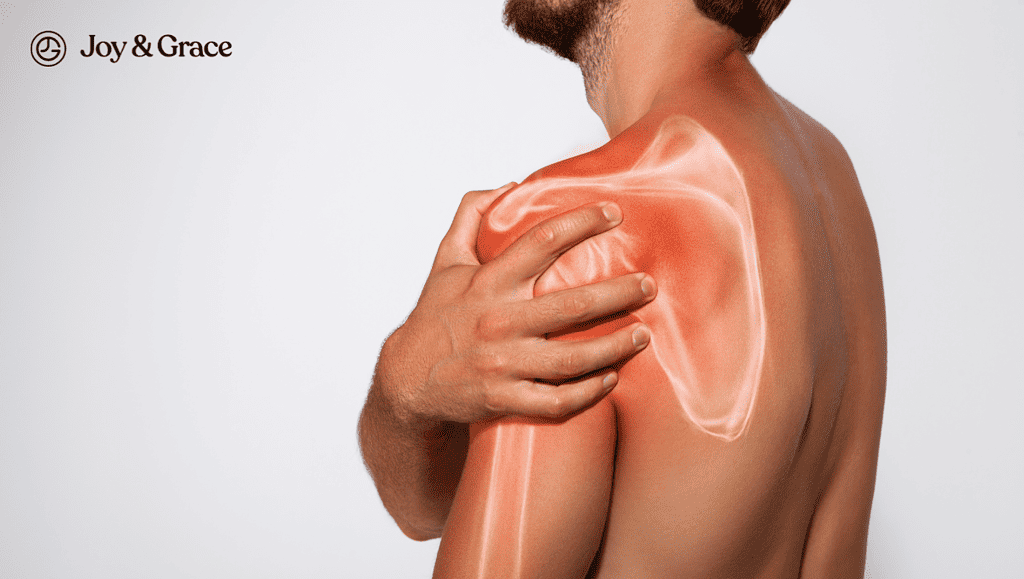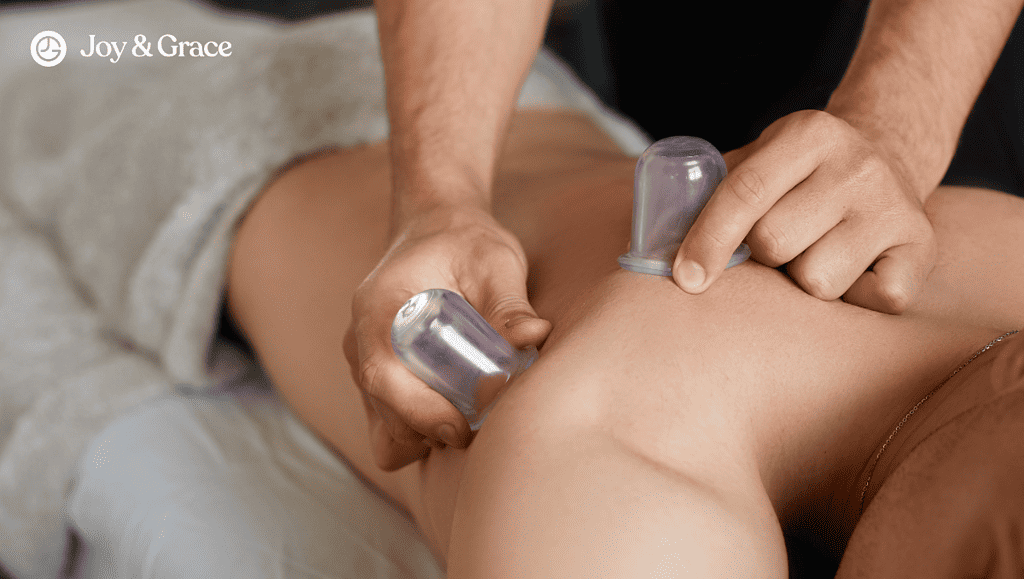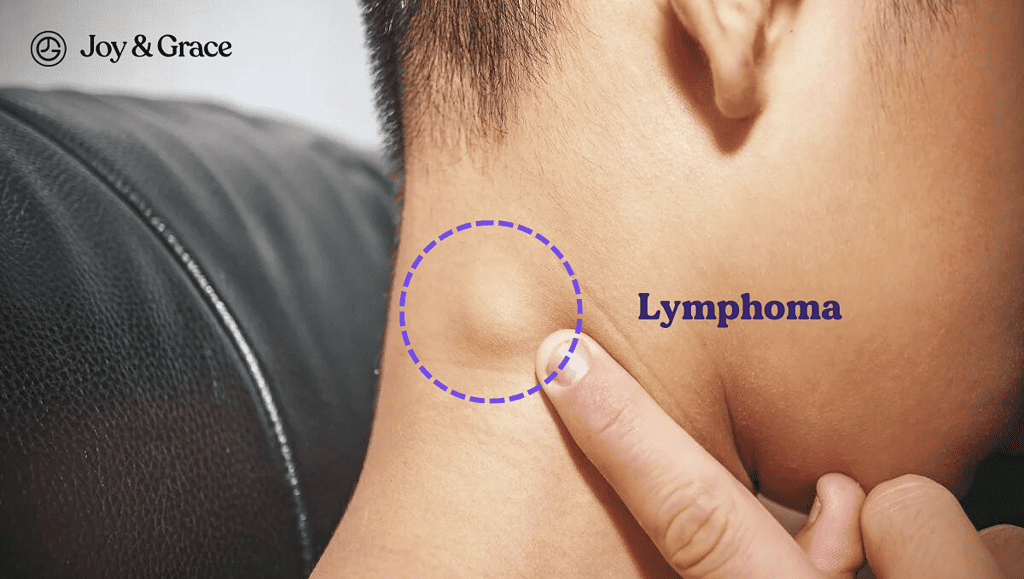Do you experience discomfort during your morning stretch that persists throughout the day? You might be experiencing rotator cuff shoulder pain.
We’ll tell you all you should know about the connection between the rotator cuff and shoulder pain. We’ll show you how to treat rotator cuff-related pain in the best way possible.
Understanding Shoulder Pain and the Rotator Cuff

The rotator cuff is an important group of muscles that wrap around the shoulder joint. These muscles help stabilize the joint and allow for a full range of motion.
If you are experiencing pain in your shoulder, it could be due to a rotator cuff disorder. But how can you tell if your shoulder pain is due to your rotator cuff? Let's first talk briefly about the rotator cuff and shoulder anatomy before we go into detail.
Anatomy of the Rotator Cuff and Associated Shoulder Pain
The rotator cuff group comprises four muscles:
- The supraspinatus,
- The infraspinatus,
- The teres minor and
- The subscapularis.
Tendons attach these muscles to the humerus, the upper arm bone.
So, what is the role of the rotator cuff in shoulder function? Well, these muscles function in lifting and rotating the arm at the glenohumeral shoulder joint. Also, rotator cuff muscles stabilize the shoulder joint by acting as a “cuff” around it.
You can now imagine what happens if the rotator cuff muscles get damaged. Inflammation, strains, and tears of the rotator cuff can result in shoulder pain, discomfort, and restricted movement.
Where is Rotator Cuff Pain Located?
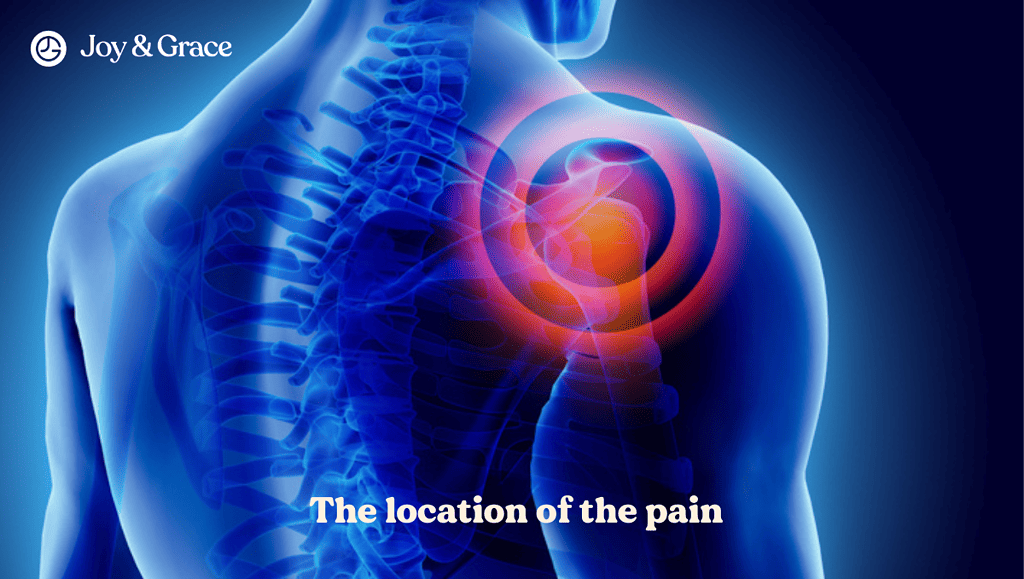
When you have rotator cuff pain, you will feel it in the area around your shoulder and upper arm. That is where the rotator cuff muscles and their tendons are located. It usually begins at the tip and front part of the shoulder and radiates down to the side of the upper arm.
Because of muscular and nervous connections, cuff pain may spread to the elbow or neck.
How Do I Know if My Pain is Rotator Cuff?
There are a few hints that may make you suspect a problem with your rotator cuff.
Rotator cuff-related shoulder is usually dull. It may get worse with the movement of the shoulder. That is especially true for overhead movements. Something as simple as combing your hair or reaching for a glass in the cupboard may worsen the pain. This type of pain can get worse when sleeping on the affected side.
The other qualities of pain depend on the underlying cause and mechanism. In the case of a rotator cuff tear, you may also feel shoulder weakness and a grating or crackling sound when moving your arm.
What is the Most Common Cause of Shoulder Pain From the Rotator Cuff?

Damage to the rotator cuff can occur for many reasons. These may range from injuries to inflammatory disorders.
One of the most common causes of rotator cuff pain is a rotator cuff injury. Injuries may appear due to long-term overuse or sudden injuries (such as accidents or unlucky falls). You might even experience a torn rotator cuff if the damage is severe.
Tendons of the rotator cuff may also suffer from chronic degeneration due to aging (also called degenerative tears). This is why degeneration is a leading cause of rotator cuff shoulder pain among older adults.
Inflammation can damage the rotator cuff and spread throughout the shoulder. Rotator cuff tendinitis is an inflammatory condition that affects the rotator cuff tendons. This may cause pain to spread to the upper arm in addition to the shoulder.
In addition to the conditions we previously mentioned, shoulder pain may also be caused by the following:
- Shoulder impingement
- Bone extensions called spurs.
- Bone variations (acromion types 2 and 3). The acromion is a bone that overlooks the shoulder joint. In some cases, it may be more curved or hooked than normal. These structural differences may affect the joint structures and nerves, potentially causing Shoulder Impingement Syndrome and pain.
- Bone defects, such as “os acromiale”. This refers to unusual formations or separations in bones. In the case of os acromiale, the shoulder's acromion bone doesn't fully fuse, which can sometimes cause discomfort or limited arm movement.
- Thickened ligaments or bursa.
Now, let’s dig deeper into rotator cuff tears as causes of rotator cuff shoulder pain.
What Are the 2 Most Common Causes of Rotator Cuff Tears?
A rotator cuff tear is a common cause of shoulder pain. It happens when a rotator cuff muscle tendon is detached from the bone. This detachment can be a partial tear or complete (also called a full-thickness tear). The two main causes of rotator cuff tears are the following:
- Injuries: You can tear your tendon when falling on your outstretched arm or lifting something too heavy fast. It may also happen with a broken collarbone or dislocated shoulder.
- Wear and tear: With age, tendons may degenerate and become weak. Repeatedly moving your shoulder in the same motion may contribute, too. Those who play sports like baseball, tennis, and rowing and those who do weightlifting are more at risk.
Can a Torn Rotator Cuff Cause Neck and Shoulder Pain?
Yes, rotator cuff tears (both partial and complete) can lead to unbearable shoulder pain. When the rotator cuff is torn, the supraspinatus tendon is usually involved. A tear in this tendon can also lead to decreased shoulder functionality. In addition to the shoulder, the pain can spread to nearby structures, causing neck pain as well.
Risk Factors for Shoulder Pain in Rotator Cuff Tears
A few factors can increase your risk of shoulder pain from rotator cuff tears. This means that your odds of having shoulder pain from a tear increase with factors such as:
- Old age,
- Being male,
- A higher BMI (Body Mass Index), and
- A diagnosis of carpal tunnel syndrome.
What Are 2 Warning Signs of a Rotator Cuff Tear?

If you suspect a rotator cuff tear, you should be aware of some warning signs or red flags. Keep in mind to check with your doctor for a tear if any of these two signs apply to you:
- Shoulder pain at rest, when moving, and at night, particularly if lying on the affected shoulder.
- Crackling sensations when moving your shoulder.
What Are the Symptoms of a Bad Rotator Cuff in My Shoulder?
The shoulder is a sophisticated joint with a wide range of motions. The ability to move in different ways is largely thanks to the rotator cuff muscles. So, if your rotator cuff goes bad, your shoulder suffers.
You may suspect issues with your rotator cuff due to the following symptoms:
- Dull ache deep in the shoulder
- Significant discomfort from the pain
- Pain that intensifies during the night
- Pain at rest and when moving the shoulder
- Loss of shoulder strength
- Crackling or grating sounds with movement in cases of tears (as mentioned above).
Note: You need to remember that just because you have shoulder pain does not mean you have rotator cuff dysfunction. Shoulder pain is a common musculoskeletal problem and can result from numerous causes. If you have any doubts, always consult your doctor.
The Impact of Rotator Cuff Shoulder Pain on Daily Life
Rotator cuff shoulder pain can negatively impact your daily activities. This is especially true for pain that becomes chronic. This is why we recommend you pay attention to your problem.
Shoulder pain from rotator cuff problems can definitely worsen your quality of life by affecting physical activity and sleep. Here’s how.
Sleep Interruptions Due to Shoulder Cuff Pain
As mentioned, shoulder discomfort from rotator cuff involvement also occurs at rest. More often than not, pain worsens at night and disrupts sleep. Lying in certain positions puts more pressure on your shoulder. This can put more stress on the rotator cuff muscles, leading to even more intense pain. Later on, we mention what you can do to improve sleep quality if you suffer from shoulder pain.
Limitations in Activity With Rotator Cuff Shoulder Pain

Shoulder rotator cuff pain can significantly affect your normal activity levels.
For example:
- Lifting heavy objects might become challenging.
- Getting dressed may suddenly become a challenging task.
- Trying to put on a jacket or reach out for something on a high shelf might start causing lots of discomfort.
- Repetitive motions of the arm, especially overhead activities, could worsen the pain. This means that, in case of shoulder pain, sports like tennis or jobs like painting are no-gos.
Nevertheless, some exercise is necessary for a full recovery. Later on, we mention what activities you can do with shoulder pain.
When to Seek Professional Help for Shoulder Cuff Pain: Benefits of Early Diagnosis
If you suspect shoulder cuff pain, we encourage you not to wait for the pain to escalate. Shoulder rotator cuff pain may begin as a small, harmless discomfort. But with time, it can become more severe, potentially leading to further complications. Thus, seeking your healthcare provider for further medical advice is always a good idea.
An early diagnosis can pinpoint whether rotator cuff dysfunction is causing the discomfort. This is crucial because shoulder pain may result from many different causes. Administering a one-size-fits-all treatment not only does not solve the problem, but it may worsen it.
Defining the source of your annoying shoulder pain from the get-go can provide the basis for a successful treatment. This is the best and only way to limit further damage to your rotator cuff and shoulder.
What is the Best Test for Rotator Cuff Pain and Tear?
In order to come up with a diagnosis for your shoulder pain, your doctor will first ask you some questions. They will want to know if you have had an injury or a similar problem in the past. They will ask you about the pain and other symptoms you are experiencing.
After taking your medical history, your doctor may perform a few physical tests and order some imaging tests. The best physical tests for rotator cuff pathologies, including tears, include the following:
During these physical examinations, your healthcare provider performs specific tests to assess the strength and range of motion of your shoulder. To pinpoint a diagnosis, doctors combine physical tests with imaging tests, such as:
- X-Ray. An X-ray cannot visualize soft tissues such as tendons. Still, it may be useful as it can find potential bony causes of your shoulder pain.
- MRI. Magnetic Resonance Imaging provides detailed images of both the bone and soft tissues. It can show rotator cuff tears and visualize ongoing inflammation.
- Ultrasound. Ultrasound waves can give a dynamic view of the shoulder in motion. It can display the tendons as they move and might show a tear in the rotator cuff.
How Do I Check Myself for a Torn Rotator Cuff?
If you have intense shoulder pain, pay attention to your symptoms.
Check if your pain persists with rest and interrupts sleep at night.
Check if you experience muscle weakness.
Check for crackling sounds when moving your shoulder.
And, we repeat: consult your doctor for any uncertainties you might have.
Treating and Managing Rotator Cuff-related Shoulder Pain

Depending on the cause of your rotator cuff-related shoulder pain, the treatment plan may include non-surgical or surgical methods. Your doctor may recommend that you treat your shoulder pain in the comfort of your own home.
Nonsurgical Treatments for Rotator Cuff Shoulder Pain
Treating shoulder pain associated with your rotator cuff begins with understanding the symptoms.
Once you have identified them, non-surgical management of rotator cuff problems can help reduce pain and improve your shoulder function. Conservative (non-surgical) treatment can improve shoulder function in 80-85% of people with rotator cuff problems.
1. Rest. Take a break from activities that worsen shoulder pain. It is necessary to allow your rotator cuff time to heal. Avoid putting pressure on the side of the painful shoulder.
2. Ice. Apply a cold pack to your shoulder for 15-20 minutes every 4-6 hours. Ice application numbs the area, reduces inflammation, and helps relieve the pain.
3. Over-the-Counter (OTC) Drugs. Acetaminophen or NSAIDs may be helpful in reducing pain and inflammation.
4. Subacromial shoulder injections. When OTC medications do not work, your doctor may suggest corticosteroid injections. Studies state that injections may be helpful in relieving pain in the short-term treatment of rotator cuff tendinitis.
5. Exercise and stretching. Gentle stretching and strengthening exercises can help restore flexibility and strength to your shoulder and rotator cuff. Remember to be careful and consult your doctor before performing any exercise. You do not want to accidentally make the pain worse.
6. Manual physical therapy. Physical therapy can be an excellent treatment method when combined with medications. Physical therapists can aid in strengthening the muscles and speeding up a recovery from an injury.
7. Suprascapular nerve block. This is a newer, effective method to treat different painful shoulder disorders. Trials have demonstrated its effect in treating shoulder pain from:
- Chronic rotator cuff dysfunction,
- Frozen shoulder, and
- Rheumatoid arthritis.
This method is inexpensive, simple, and safe. It involves the injection of an anesthetic called bupivacaine.
8. Ultrasound and shockwave therapy. These methods are more effective in the short-term treatment of tendinitis.
How Do I Treat Shoulder Pain at Home?
If your rotator cuff shoulder pain is mild, your doctor may suggest treating it at home. At-home shoulder pain treatment includes resting, applying ice, performing exercises, and using OTC medications.
Some of the best light exercises and stretches that can bring back shoulder function are:
- Weighted pendulum exercise.
This exercise can be done from a sitting or standing position. Start by holding a light weight in the hand of the affected shoulder. Relax the shoulder and allow the arm to hang down. Lean forward at a 20- to 25-degree angle and swing your arm in a small circle, about one foot in diameter. Perform ten circles in each direction once or twice a day.
- Towel stretch.
Grasp a towel behind your back and hold it at a 45-degree angle. Use your healthy arm to slowly pull the affected arm toward the lower back. Do this stretch 10 to 20 times per day. You can also perform this exercise while holding the towel horizontally.
- Cross-body stretch.
This exercise can also be done while sitting or standing. Use the unaffected arm to lift the affected arm at the elbow and bring it up and across your body. Press above the elbow to stretch the shoulder. Hold the stretch for 15 to 20 seconds. Repeat 10 to 20 times.
- Finger walk.
Stand facing a wall. With the affected arm, reach out and touch the wall at about waist level. Slowly walk your fingers up the wall in a spider-like motion. Reach up as far as you can or until you raise your arm to shoulder level. Your fingers should be doing most of the work, not your shoulder muscles. Perform this exercise 10 to 20 times a day.
- Inward and outward rotation.
These are isometric toning exercises. Inward rotation of the shoulder can be done by tying one end of a band to the doorknob of a closed door. Bend your elbow 90 degrees and pull the band toward your waist like a swinging door. Hold for five seconds. Outward rotation can be performed by holding your elbows close to your sides at a 90-degree angle. Grasp the band in both hands and move your forearms apart two to three inches. Hold for five seconds.
Can a Rotator Cuff Heal on Its Own?
Minor rotator cuff injuries can heal with time, rest, and appropriate home care. Strengthening exercises can also contribute positively to the recovery process.
Still, it’s difficult toknow whether your pain resulted from something minor or somethingmore serious. For example, rotator cuff tendon tears are much less likely to heal naturally. They usually call for medical care and surgery.
What is the Best Treatment for Rotator Cuff Injury?
The type of treatment for rotator cuff injuries can vary a lot. It depends entirely on the severity of the injury. In cases of minor injuries, conservative treatment can do the job. But if we are talking about a serious injury like a complete rotator cuff tear, surgery becomes a must.
Surgical Treatments: What Are the 3 Types of Rotator Cuff Repair?
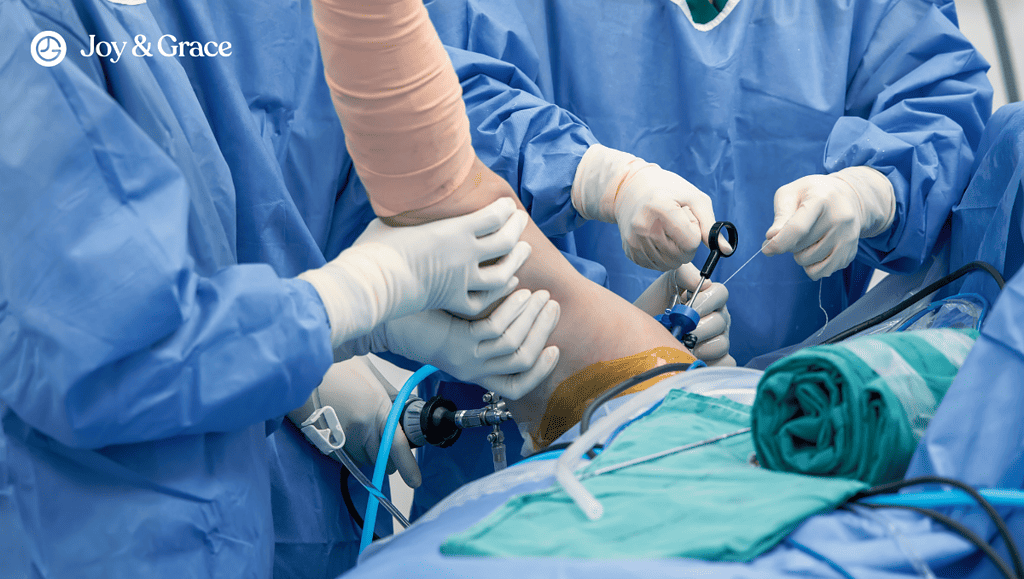
If conservative treatment for rotator cuff shoulder pain does not work, surgery may be considered. Here are a few general rules that may hint at whether surgery may be necessary:
- Your symptoms have lasted 6 to 12 months,
- You have a significant tear,
- Your muscles feel weak, and your shoulder loses its function,
- You experienced a recent acute injury.
Surgery is mostly used for rotator cuff tears, especially if they are complete. Surgery to repair a torn rotator cuff intends to re-attach the tendon to the humerus, the long bone of the upper arm.
The three types of surgical repair options for rotator cuff tears include the following:
- Open repair. This method is the traditional approach to surgically repairing a torn rotator cuff tendon. Open repair consists of a surgical incision at the top of the shoulder. The deltoid muscle is cut to access the rotator cuff tendon.
- Arthroscopic repair. Arthroscopic repair involves using a tiny camera to visualize the shoulder structures. This tiny camera is known as an arthroscope. This type of repair makes incisions quicker and more precise. Arthroscopic repair is a newer, less invasive method than the traditional open repair method.
- Mini-open repair. The mini-open repair method uses the same central idea as the open repair method. In this type of repair, the surgeon may initially use an arthroscope. He will then make a smaller incision to gain access to the tendons.
What is the Recovery Time for Rotator Cuff Surgery?
In a study of 201 patients who underwent rotator cuff surgery, about 30% achieved functional shoulder recovery three months after arthroscopic surgery. 40% of patients reported recovery after 3–6 months. The remaining 30% recovered in more than six months.
Understandably, larger tears recover more slowly.
Resting and gradually performing strength exercises after surgery dramatically improves recovery time.
What Happens if a Rotator Cuff Goes Untreated?
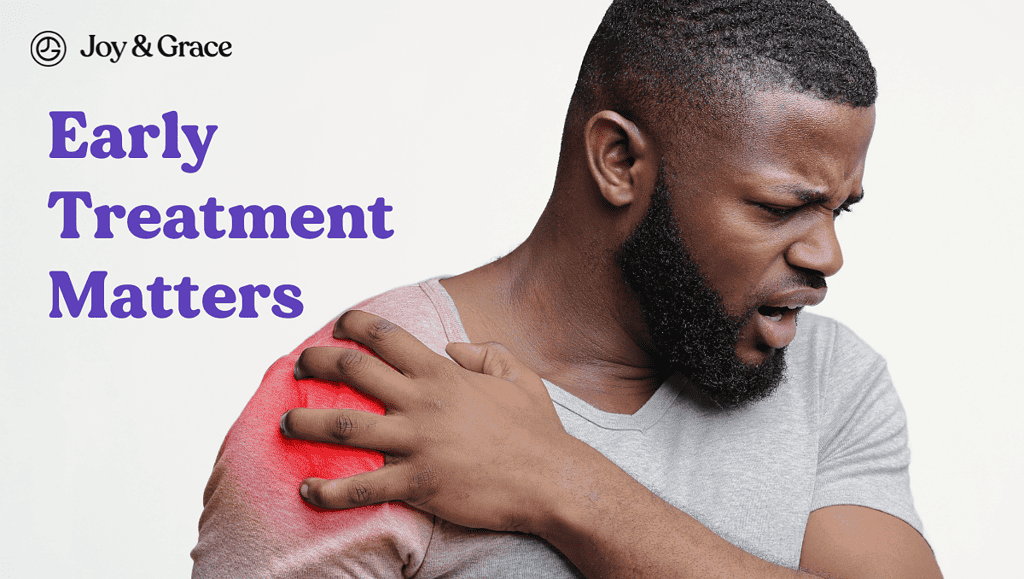
Is it possible to live with a damaged rotator cuff? Can you just brush off the shoulder pain and go on with your day? Most certainly not.
Without treatment, rotator cuff problems may cause debilitating complications. A minor strain could progress to a full-blown tear if not properly treated. A neglected rotator cuff tear can then cause more pain, degeneration, and instability.
Stopping movement and exercise altogether may lead to “frozen shoulder.” As a result of inactivity, shoulder tissues shrink in size, and movement becomes restricted.
Thus, it is essential to keep these consequences in mind when considering the outcomes of an untreated rotator cuff. Addressing your problem is the first step toward full recovery.
Preventing Rotator Cuff Shoulder Pain
Preventing rotator cuff shoulder pain starts with understanding how it occurs. This way, you can make the necessary lifestyle changes to avoid it.
Exercises for the Shoulder Rotator Cuff Muscles to Prevent Pain
Incorporating strength training into your fitness routine is a great start. Gradually building up the muscles around the shoulder will provide better support for the rotator cuff. This reduces strain and minimizes the risk of injury.
Always warm up your muscles before exercise. With time, you will notice an increase in your endurance, strength, flexibility, and even overall mood!
The good thing about exercises is that they can be performed anywhere, even at home! Recall how we previously mentioned the kinds of activities we suggest at home.
Lifestyle Adjustments to Reduce Shoulder Rotator Pain
Maintaining good posture throughout the day can keep shoulder rotator cuff pain at bay.
Hunched shoulders increase the pressure on your rotator cuff. A slouched posture can potentially lead to wear and tear over time. Regular breaks during extended computer use or heavy lifting can help prevent this.
Pay attention to the way you sleep, too! Try to use adequate bedding and headrests.
Knowing when shoulder pain is rotator cuff-related can help prevent it. Always stay informed. Do not hesitate to reach out to your healthcare provider if you have any questions or concerns.
Takeaway
The rotator cuff muscles help stabilize the joint and allow for a full range of motion. If you are experiencing pain in your shoulder, it could possibly be due to a rotator cuff disorder.
The rotator cuff group comprises four muscles. Tendons attach these muscles to the upper arm bone.
Rotator cuff shoulder pain usually begins at the tip and front part of the shoulder and radiates to the side of the upper arm. It may also spread to the elbow and neck.
One of the most common causes of rotator cuff pain is an actual injury to the rotator cuff. Pain may also arise from inflammatory or degenerative conditions.
If you suspect shoulder damage from rotator cuff problems, here are some symptoms to look out for:
- Dull ache deep in the shoulder
- Significant discomfort from the pain
- Pain that intensifies during the night
- Pain at rest and when moving the shoulder
- Loss of strength
- Crackling or grating sounds with movement in cases of tears.
Your doctor may reach a diagnosis of rotator cuff shoulder pain by:
- Taking your history
- Performing physical exams
- Ordering imaging tests.
The treatment of rotator cuff shoulder pain depends on the cause. Most of the time, conservative treatment can be good enough. In the event of an actual tear in the rotator cuff, surgery becomes imminent.
If left untreated, shoulder pain may lead to debilitating complications.
Preventing rotator cuff involves exercising and making lifestyle changes.
